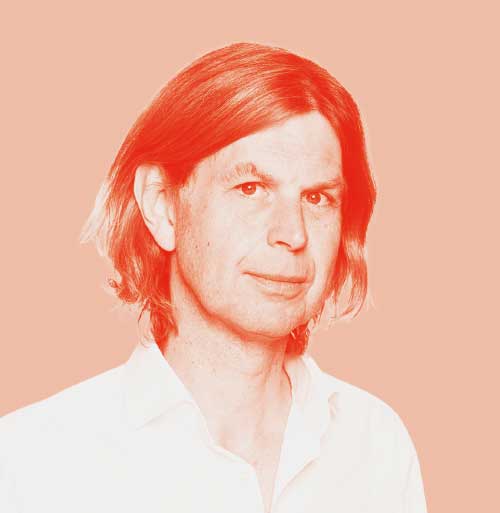Karel Verhoeven
Editor-in-chief de Standaard

De Standaard seeks answers to the important questions of our time, sketches the broad perspective and provides the reader with what is worthwhile in a broad social context.
www.standaard.be
Founded
1918
Daily readership print
480.760
Daily readership online
317.028
Number of subscribers
(print + digital) 109.959
Podcast
De Standaard Podcast
Journalists employed
110
An editorial team that doesn’t want to be controlled by experts needs its own expertise. Just before the corona crisis began, De Standaard created a new science team. But data says nothing without stories.
For a year now, we’ve been living by the grace of numbers. We see them in the curve of infections, hospital admissions, deaths and, since the start of 2021, vaccinations. The curve defines what remnants of freedom we retain. In normal times, a chart is the start of journalism. In 2020, the chart was the news.
That was a gap, and we’ve embraced it since the beginning. Understanding what we’ve experienced can only be done by accurately reading the numbers. Statistics are notoriously flexible. Strict virologists, politicians and those calling for relaxation of rules use them for their own ends. Nobody who wants to seek the truth can hand over their journalistic role to “the scientists”. And yet experts ruled in Flanders, on the television and in many papers.
At first, that seemed like a blessing. Respect for science had returned. But the journalistic limitations soon became clear. The word of experts became news, though it was often just a matter of interpretation or prediction. An opinion. Based on uncertainty and unknown factors. Their judgement then becomes policy. Their words turned out to be law. Their media forum was a power stage. The backlash duly arrived, with smear campaigns against these experts – especially in media that outsourced their truth-seeking to the experts.
De Standaard avoided this bleak dynamic. We owe that partly to coincidence. Two months before the coronavirus hit, we established a new science team. The editors are specialists, with academic qualifications in biology, statistics, biomedical science, health and disease, the economy of life and death, vaccines and the pharma industry. They read the studies in professional journals, including those not yet peer reviewed, that virologists and epidemiologists rely on. They quote relevant scientists as sources, not as oracles. Each report is supported by multiple sources, as the journalistic method demands. They draw lines so that the reporting is consistent, despite all the twists and turns they want to be the first to report. Their journalism provides guidance and confidence for readers. Confidence, too, in what we don’t yet know and the degree of uncertainty.
We have achieved this primarily through teamwork. Intense teamwork has become one of our most important journalistic achievements of 2020. That sounds obvious: of course the paper and website need teamwork. But corona went right through the lines that separate the editorial team. Science affects politics which has partly overtaken the economy. Accurate reporting on this requires the input of lots of journalists. We learned to work with half a dozen editors on a single piece or a single theme, each of them from home. WhatsApp became invaluable, allowing us to discuss throughout the day what we want to explore, who to challenge, which questions to ask, what the line is and what details were needed. We now open the paper and website with more thorough and comprehensive articles. It’s a way of working that we also want to apply to the climate, to developments in social media or the digital economy, to every subject that makes the world flexible. It delivers more reliable journalism in a complex reality.
But the coronavirus was of course not just numbers and data. We were in the care homes, in the hospitals, and with the children who had no computer at home. We got the most intense reactions from our special edition of the Weekblad, at the end of June, in which we remembered the first 10,000 coronavirus deaths. How to commemorate a life if there can’t even be a funeral, when people are remembered in the most austere circumstances? The mass of death at a distance, without a proper farewell, is undoubtedly the most affecting experience of 2020. In this corona year, giving victims their humanity back was our most important achievement.